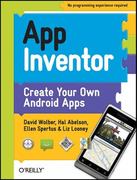Question
Use the Java-based parser of Illustration 2.22 to parse text into objects. Use the Java-based JSON exporter of Exercise 2.8 to serialize objects as JSON.
Use the Java-based parser of Illustration 2.22 to parse text into objects. Use the Java-based JSON exporter of Exercise 2.8 to serialize objects as JSON. It turns out that the JSON format, when deserialized into Python with the standard load function, fits exactly the representation type of the fluent API implementation in Illustration 2.7. Validate the suitability of the Python objects, thus obtained, by applying the Python-based components for interpretation and well-formedness checking, as discussed earlier
Exercise 2.8
Implement an object-to-JSON mapping in Java. Start from the baseline object model for FSML (Section 2.2.1). Check that the mapping results in the expected JSON output for the turnstile example.
Step by Step Solution
There are 3 Steps involved in it
Step: 1

Get Instant Access to Expert-Tailored Solutions
See step-by-step solutions with expert insights and AI powered tools for academic success
Step: 2

Step: 3

Ace Your Homework with AI
Get the answers you need in no time with our AI-driven, step-by-step assistance
Get Started


